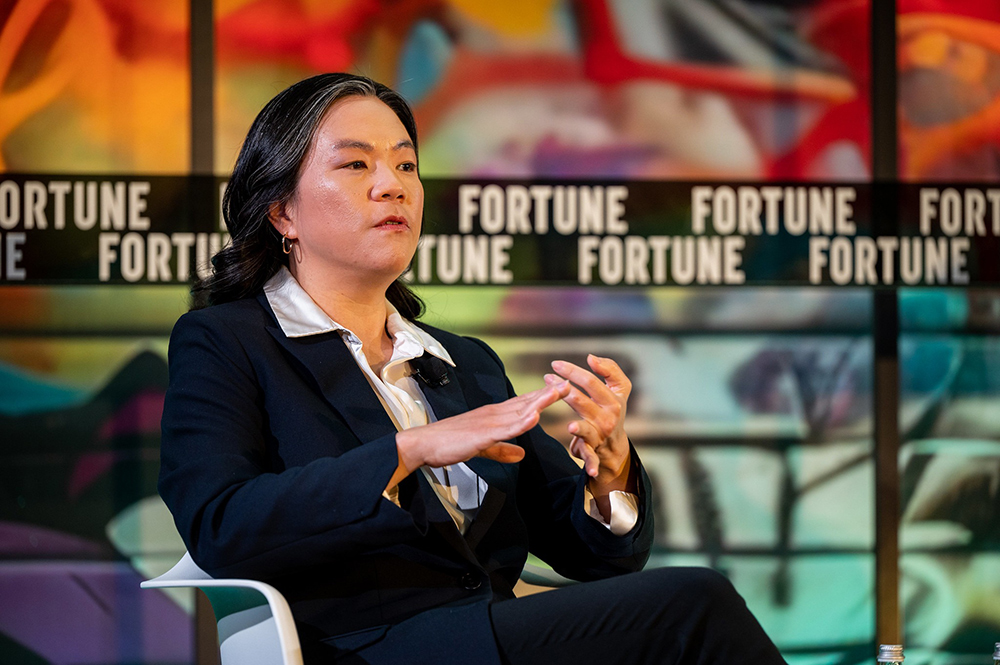
生成式人工智能(AI)市场持续火爆,主要市场参与者竞相开发最优秀的产品。作为在这场竞赛中一直更加谨慎的参与者,谷歌(Google)本周发布了一条其Gemini大语言模型的预告视频。但有媒体曝光该视频并非实时录制的AI的表现。
谷歌发布的演示视频,展示了其AI模型的多模态能力,它能够巧妙解读和处理从直播视频和音频中提取的信息。这对谷歌而言是一项重大成就,尤其是在竞争激烈的生成式AI领域,谷歌一直落后于OpenAI等竞争对手。然而,据彭博社报道,演示视频实际上是通过「使用视频的静态图像帧,并通过文本提示」制作,而不能代表它似乎真得实现了实时语音和视频处理。
周一,在旧金山召开的《财富》AI头脑风暴大会上,谷歌助手与Bard部门副总裁兼总经理萧茜茜谈论了这条引起争议的演示视频,着重阐述了Gemini作为一个大语言模型在基准测试中的表现,以及它将如何完善谷歌聊天机器人Bard。
她说道:“视频是完全真实的。所有提示词和模型的回答都是真实的。我们确实为了简洁缩短了部分内容,我们把它们放到视频中,作为制作视频的参考信息。”
演示视频展示了新AI模型的多模态能力,它能识别出一条曲线,可以评价新增线条的曲度,最后识别出一副鸭子的画。在这个过程中,模型始终能够识别每一种元素,并实时提供与鸭子相关的事实和回答。
萧茜茜强调了Gemini的里程碑意义,展示了它在基准测试中的表现。基准测试是对AI模型进行的测试,测试范围包括高中物理、专业法律问题和道德情境等。据the Verge报道,Gemini Ultra在32个基准测试中,有30个测试的表现超过OpenAI的GPT-4,这是一项了不起的成就,但Gemini Ultra要到明年才能发布。目前,Bard使用的是相对落后的Gemini Pro,相当于GPT 3.5。
萧茜茜表示,Gemini模型将继续完善谷歌搜索和Bard聊天机器人。她表示,Bard “目前是市场上最受欢迎的免费聊天机器人”。(财富中文网)
翻译:刘进龙
审校:汪皓
生成式人工智能(AI)市场持续火爆,主要市场参与者竞相开发最优秀的产品。作为在这场竞赛中一直更加谨慎的参与者,谷歌(Google)本周发布了一条其Gemini大语言模型的预告视频。但有媒体曝光该视频并非实时录制的AI的表现。
谷歌发布的演示视频,展示了其AI模型的多模态能力,它能够巧妙解读和处理从直播视频和音频中提取的信息。这对谷歌而言是一项重大成就,尤其是在竞争激烈的生成式AI领域,谷歌一直落后于OpenAI等竞争对手。然而,据彭博社报道,演示视频实际上是通过「使用视频的静态图像帧,并通过文本提示」制作,而不能代表它似乎真得实现了实时语音和视频处理。
周一,在旧金山召开的《财富》AI头脑风暴大会上,谷歌助手与Bard部门副总裁兼总经理萧茜茜谈论了这条引起争议的演示视频,着重阐述了Gemini作为一个大语言模型在基准测试中的表现,以及它将如何完善谷歌聊天机器人Bard。
她说道:“视频是完全真实的。所有提示词和模型的回答都是真实的。我们确实为了简洁缩短了部分内容,我们把它们放到视频中,作为制作视频的参考信息。”
演示视频展示了新AI模型的多模态能力,它能识别出一条曲线,可以评价新增线条的曲度,最后识别出一副鸭子的画。在这个过程中,模型始终能够识别每一种元素,并实时提供与鸭子相关的事实和回答。
萧茜茜强调了Gemini的里程碑意义,展示了它在基准测试中的表现。基准测试是对AI模型进行的测试,测试范围包括高中物理、专业法律问题和道德情境等。据the Verge报道,Gemini Ultra在32个基准测试中,有30个测试的表现超过OpenAI的GPT-4,这是一项了不起的成就,但Gemini Ultra要到明年才能发布。目前,Bard使用的是相对落后的Gemini Pro,相当于GPT 3.5。
萧茜茜表示,Gemini模型将继续完善谷歌搜索和Bard聊天机器人。她表示,Bard “目前是市场上最受欢迎的免费聊天机器人”。(财富中文网)
翻译:刘进龙
审校:汪皓
Amidst the frenzy that is the generative AI market, major players are fiercely vying for the shiniest product. For its part, Google, traditionally a more measured participant in this race, unveiled a teaser video for their Gemini large language model this week. However, things took a controversial turn when reports revealed the video was not actually a real time representation of the AI in action.
In the demo video released by Google, the showcased AI model shows its multimodal capabilities, demonstrating an ability to deftly decipher and handle information gleaned from live video and audio. It’s a formidable achievement for Google, particularly in the fierce arena of competition against the likes of OpenAI, where it has lagged behind. However, as reported by Bloomberg, the showcased demo was crafted by “using still image frames from the footage, and prompting via text,” rather than the real-time and vocal and video processing it seemed to achieve.
On stage at Fortune‘s Brainstorm AI conference in San Francisco on Monday, vice president and general manager of Google Assistant and Bard Sissie Hsiao spoke about the contentious demo video, focusing on the benchmarks Gemini reached as a model, and how it’ll propel Google’s chatbot Bard.
“The video is completely real. All the prompts and the model responses are real,” Hsiao said. “We did shorten parts for brevity, which we put in the video as information on making the video,” she noted.
The demo video displays the new AI model’s multimodal capabilities, identifying a squiggly line, then the curves of new lines, culminating in the creation of the drawing of a duck. Throughout this process, the model consistently recognizes each element, offering duck-related facts and answers in real-time.
Hsiao highlighted the milestones conquered by Gemini, showcasing its abilities in benchmarks that put AI models to the test, spanning high school physics, professional legal quandaries, and moral scenarios. According to the Verge, Gemini Ultra beat OpenAI’s GPT-4 in 30 out of 32 benchmarks—an achievement worth boasting about, although Gemini Ultra will not be released until next year. For now, Bard uses the less advanced Gemini Pro, which is roughly akin to GPT 3.5.
Hsiao said these Gemini models will continue to improve Google search as well as the Google Bard chatbot, which she said is “the most preferred free chat bot now in the market.”






